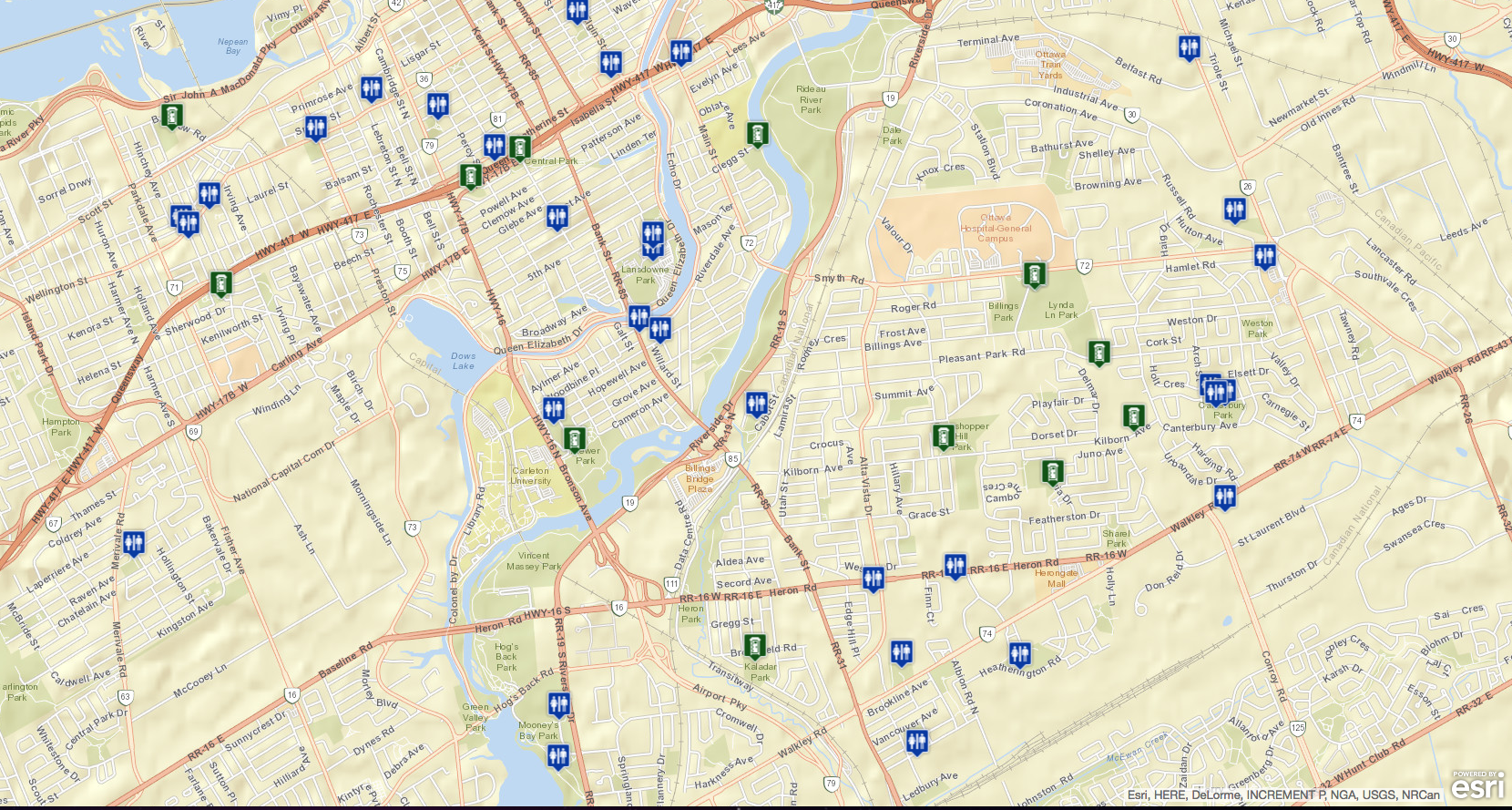People in Ottawa may find relief with multiple apps now available to help users locate the nearest public washrooms in the city.
These apps are based on public data provided by the City of Ottawa on where toilets are located, but are solely being mapped by third-party developers.
Third-party projects such as the aptly-named “ottpee” website, created by city hall watchdog blogger Kevin O’Donnell, have sprung up in recent years. There’s also Bathroom Scout and Toilet Finder, which have mapped out hundreds of thousands of washroom locations in several cities across the world.
Toilet Finder has covered Ottawa since 2009, but was able to add more than 100 listings since mid-March with more recent data, according to project manager Eric Thommerot.
A report on the public data presented to the city’s information technology committee on March 31 recommended that the city continue to work on improving the data but stopped short of proposing the city create its own mobile app. Instead, the city will rely on third-party developers to provide toilet locations accessible to the public.
According to the report, the three apps are user-friendly, and include information on accessible washrooms, hours of operation, and baby changing stations.
The data gathered for these apps was a result of public pressure last autumn to improve the accessibility and awareness of municipal washrooms, said Jeff Leiper, a city councillor and vice-chair of the information technology subcommittee, at the meeting. Much of the pressure had come from GottaGo!, an Ottawa-based advocacy group calling for more public toilets.
Joan Kuyek, chairperson of GottaGo!, said there is still improvement needed with city data and the apps. She said there should be printed maps, indicators for gender neutral washrooms, co-ordination with the OC Transpo website, and options for people with a disability, such as braille.
Currently, the city provides a map of 190 public washrooms that do not feature specific restrictions, such as seasonal operation.
“We want to make sure that the accessibility rating was easier to access and is more refined. It is pretty crude right now,” Kuyek said. “You hear about people in wheelchairs who could get into the washrooms and then could not get out because of the way the door was positioned.”
Rachel Canham, a third-year geography and environmental studies student at Carleton University, has researched the accessibility of public washrooms in Ottawa.
Through a series of one-on-one interviews, she found common complaints of the lack of public washrooms, poor maintenance, and difficulty for those who use assistive devices.
“My greatest concern is that people aren’t living their lives to the fullest because of something so simple and so basic to all humans,” Canham said. “There are people constrained to their homes and unable to go to places in this city because they know they won’t have access to a toilet.”
Kuyek said people with small kids, pregnant women, men with prostate problems, and the homeless could benefit from better access to toilets, she said. Meanwhile, there are 7,000 people in Ottawa with Crohn’s disease and colitis, she said.
“When we started out a couple of years ago, basically all we would get were laughs. We could never get past the five-year-old potty humour,” Kuyek said. “But for an awful lot of people, this is a really serious issue.”






